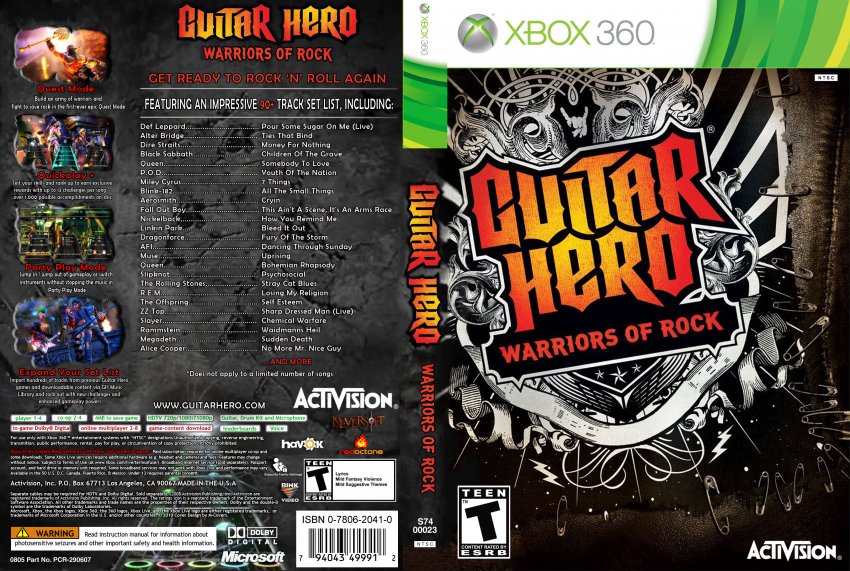

Earlier this year he completed sessions for a planned solo album, entitled Shadow Club, featuring Eric Clapton and others. In 2010 he wrote a memoir, White Rooms & Imaginary Westerns, and wrote lyrics for Procol Harum’s final album Novum in 2017. But he took work in the 1980s as a singer and percussionist with musicians such as jazz pianist Mervyn Afrika and the Barrelhouse Blues Orchestra, and his creative partnership with Bruce endured, as did another with Phil Ryan, a Piblokto! member he reconnected with: the pair released four albums together between 19.
#Hardest song on guitar hero live movie#
1973 solo album The Not Forgotten Association paired his beat poems with musical backings, played by the likes of Vivian Stanshall.īrown drifted away from the music scene after the mid-70s and focused on script writing – his credits include the screenplay for children’s film Felix the Cat: the Movie in 1988. Next came the band Piblokto!, lasting from 1969 to 1971 with a shifting lineup, resulting in two LPs much-admired by fans of British psychedelia: Things May Come and Things May Go but the Art School Dance Goes on For Ever, and Thousands on a Raft.īrown connected with British rhythm and blues bandleader Graham Bond, resulting in the album Two Heads Are Better Than One. After his work with Cream, and an increasing embrace of singing, came a new band playing psychedelic jazz and blues, Pete Brown and the Battered Ornaments, though he was edged out of the lineup after the 1969 album A Meal You Can Shake Hands With in the Dark. Brown started to combine his work in live performance with musicians, including a group with Horovitz, New Departures another partner was folk guitarist Davey Graham.īrown formed the First Real Poetry Band in the early 1960s, delivering poetry in front of a quartet of jazz musicians who included guitarist John McLaughlin (later one of British jazz’s most esteemed figures for his work with electric-period Miles Davis), and held down a jazz poetry residency at London’s Marquee Club. Born in Surrey in 1940, he began writing poetry in his teens, and became an important proponent of British beat poetry, including in a partnership with Mike Horovitz – they recited their work at the Royal Albert Hall in 1965 alongside beat poetry icons such as Allen Ginsberg and Gregory Corso. Photograph: Philippe Gras/Alamyīrown remained Bruce’s go-to lyricist for most of his solo albums after Cream disbanded in 1968, from his acclaimed debut Songs for a Tailor, a UK Top 10 hit in 1969, to Silver Rails in 2014.īut Brown’s career long predated Cream and he would go on to have numerous separate creative projects.

Along with these fellow legends, Beck famously played with David Bowie during his 1973 Ziggy Stardust at London’s Hammersmith Odeon and on Ozzy Osbourne’s latest album, 2022’s “Patient Number 9.Pete Brown performing in 1970.

He played according to his own rules, with styles as unpredictable as the diverse genres through which he jammed, flanged, strummed and rolled.Ĭapriciously innovative and unwilling to compromise - often to the detriment of having a single-minded career goal - Beck was one of Great Britain’s most noted musicians to come out of the psychedelic blues-based 1960s, an honor he shared with his fellow Yardbirds, Eric Clapton and Jimmy Page.įor all of his frenetic soloing prowess, however, Beck was, like Keith Richards, a rhythm guitar monster whose dedication to soul led him to create gorgeous licks for a young, pre-Faces Rod Stewart and alongside Stevie Wonder on the latter’s “Talking Book” classic. Jeff Beck, who died suddenly at the age of 78, was among the first and last of rock music’s epic guitar heroes.


 0 kommentar(er)
0 kommentar(er)
